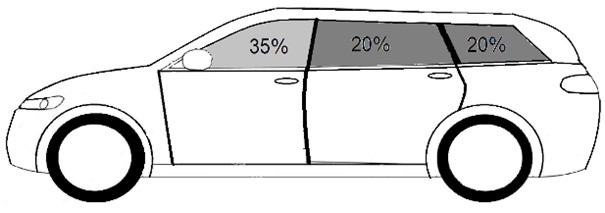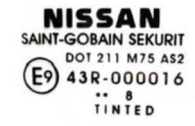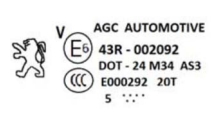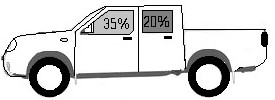On this page
These are the guidelines for window tinting on a light motor vehicle with a gross vehicle mass less than or equal to 4.5 tonnes.
Background
The standards for window tinting are specified in the South Australian Road Traffic (Light Vehicle Standards) Rules 2018 and apply to vehicles operating in South Australia.
Vehicles that do not comply with the standards place the driver, owner and operator at risk of committing an offence.
The luminous transmittance means the amount of light that can pass through a window as a percentage of the amount that would pass if there was no window in place.
The reflectance value means the amount of light that is reflected by the window.
Windscreen
The windscreen of a motor vehicle must have a luminous transmittance of at least:
- 75% for a motor vehicle built after 1971
- 70% for any other motor vehicle.
The windscreen must not be coated in a way that reduces its luminous transmittance, except for the greater area of:
- the upper 10% of the windscreen, or as originally ‘masked’ by the vehicle manufacturer
- the area above the highest point of the windscreen swept by a windscreen wiper.
Ensure that a tinted band applied does not obscure any original equipment sensors or cameras mounted to the inside of the windscreen.
Driver and front passenger windows or interior partition
The driver and front passenger windows or interior partition of a motor vehicle must have a luminous transmittance of at least 70% and may be coated to achieve a luminous transmittance of not less than 35%.
Windows or interior partition behind the driver’s seat
Passenger vehicle
The windows or interior partition behind the driver’s seat may be coated to achieve a luminous transmittance of not less than 20%.

Figure 1 Station wagon
Goods vehicle
For vehicles designed primarily for the carriage of goods - eg panel vans, single cab utes, and fitted with at least 1 rear vision mirror on each side, windows behind the driver’s seat may be coated to achieve a luminous transmittance of 0%.
Modified vehicle
When a vehicle is modified in a way that changes the design from a goods vehicle to a passenger vehicle - eg seats are added to a goods van, the windows of the modified vehicle cannot be coated to a luminous transmittance less than 20%. However, if seats are removed from a passenger vehicle to make it a goods vehicle, windows can be coated to a luminous transmittance of 0%.
Note: A goods vehicle shall continue to be considered to be primarily for the carriage of goods if after adding more seats, more than 60% of the original load-carrying space is still available to carry a load, its windows can be coated to a luminous transmittance of 0%.
Privacy glass
The windows behind the driver’s seat can be privacy glass with a luminous transmittance below 20%. Such windows must be part of the vehicle when supplied by the vehicle manufacturer.
It must not be coated in a way that reduces its luminous transmittance.
Reflectance
Any window that has been coated to reduce its luminous transmittance must not have a reflectance value of more than 10%. It must not be reflective or mirror-like as it could dazzle other drivers by reflecting sunlight or headlight beams.
Body tint and manufacturer’s marking
The manufacturer’s markings etched into each piece of glass indicate whether a windscreen or window has been manufactured with a tint in the glass, which is known as ‘body tinted’.
Words such as 'Antisun' or 'Antiglare' in the marking show the glass is body tinted. Some glass manufacturers also state the luminous transmittance of the windows as a percentage and other glazing is marked 'AS1' for clear glass, 'AS2' for a light body tint and 'AS3' for a darker body tint.
This image shows the markings on glazing with a 'body tint'. This is identified by the markings 'TINTED' and 'AS2'.

Where a window is privacy glass, it is marked with a 'V' by the manufacturer. The 'V' symbol is marked next to the 'E' marking.
This image shows the 'V' marking on the rear passenger window.

Installer
A tint installer must consider the luminous transmittance of the existing body tint before applying any tint. It is recommended that the installer undertakes a test to ensure that the luminous transmittance and reflectance values are within acceptable limits.
Note: The tint, including clear tint, should not be installed between the centre high-mounted stop lamp and rear window glass, as it reduces the visibility of the lamp and makes it non-compliant.
Vehicle Standards reference: MR430.


